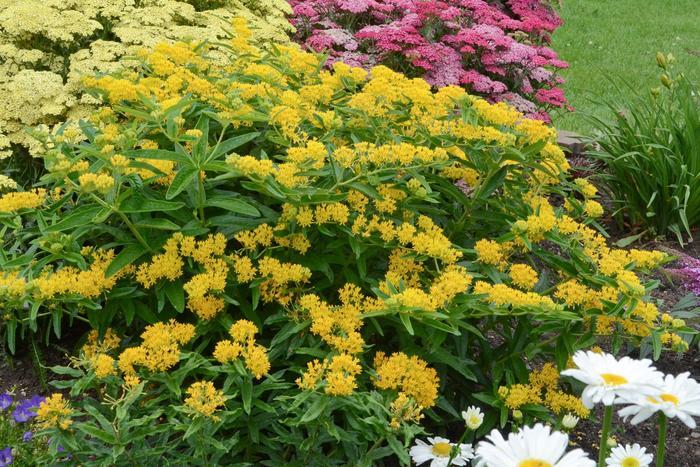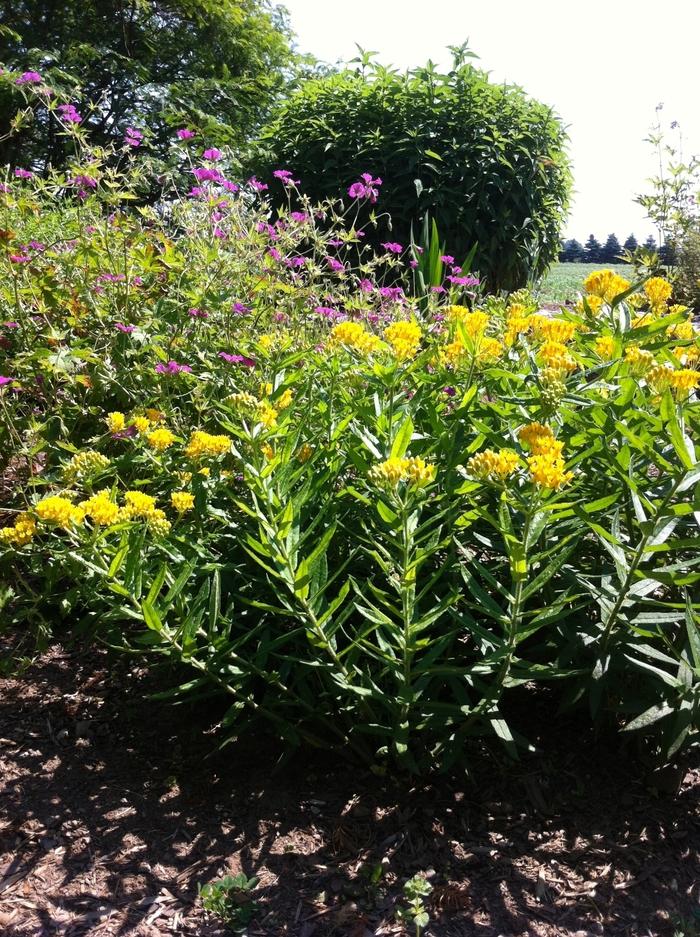



Plant Calculator
Enter the approximate length and width of the area you will be planting and click 'Calculate' to determine how many Asclepias tuberosa 'Hello Yellow' you will need.
*Correct and successful spacing is complex and depends on project conditions.
Asclepias tuberosa 'Hello Yellow'
Butterfly Milkweed
'Hello Yellow' features flat-topped clusters (umbels) of bright yellow flowers atop upright stems with narrow, lance-shaped leaves.
Asclepias tuberosa, commonly called butterfly weed, is a tuberous rooted, native perennial that occurs in dry/rocky open woods, glades, prairies, fields and roadsides. It typically grows in a clump to 1-2.5' tall and features clusters (umbels) of bright orange to yellow-orange flowers atop upright to reclining, hairy stems with narrow, lance-shaped leaves
- Native perennial
- Beautiful flowers all summer
- Attractive seed heads
- Food source for Monarch butterflies

- Category: Perennials
- Breeder: Pollinate by Design
- Hardiness Zone: 3-9
- Height: 18-28 in
- Spread: 12-20 in
| Item | Size | Avail | Your Price | Qty |
|---|---|---|---|---|
| GWS008606 | 1 Gal | In Stock | $22.00 |
GWS008606
Unlike many of the other milkweeds, this species does not have milky-sapped stems. Flowers give way to prominent, spindle-shaped seed pods (3-6" long) which split open when ripe releasing numerous silky-tailed seeds for dispersal by the wind. Seed pods are valued in dried flower arrangements. Long bloom period from late spring throughout the summer. Flowers are a nectar source for many butterflies and leaves are a food source for monarch butterfly larvae (caterpillars). Also commonly called pleurisy root in reference to a prior medicinal use of the plant roots to treat lung inflammations.
Attracts Wildlife
| • | Attracts Butterflies |
Critter Resistance
| • | Deer Resistant |
Exposure
| • | Full Sun |
Foliage Color
| • | Dark Green |
Soil Moisture
| • | Average Water |
Habit
| • | Upright |
Season of Interest (Flowering)
| • | Summer |
Additional Information about Asclepias tuberosa 'Hello Yellow'
Genus name honors the Greek god Asklepios the god of medicine.
Growing & Maintenance Tips for Asclepias tuberosa 'Hello Yellow'
Easily grown in average, dry to medium, well-drained soils in full sun. Drought tolerant. Does well in poor, dry soils. New growth tends to emerge late in the spring. Plants are easily grown from seed, but are somewhat slow to establish and may take 2-3 years to produce flowers. Mature plants may freely self-seed in the landscape if seed pods are not removed prior to splitting open. Butterfly weed does not transplant well due to its deep taproot, and is probably best left undisturbed once established.
